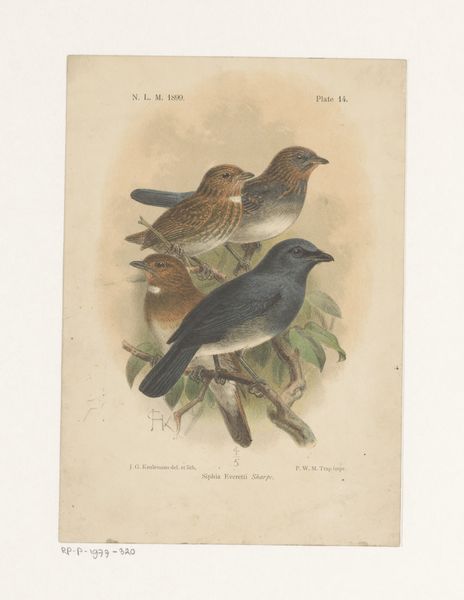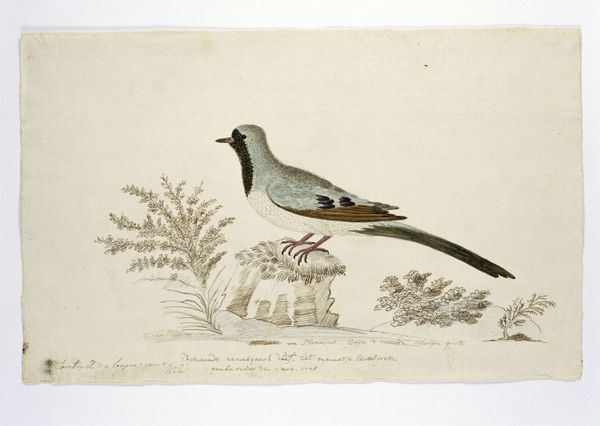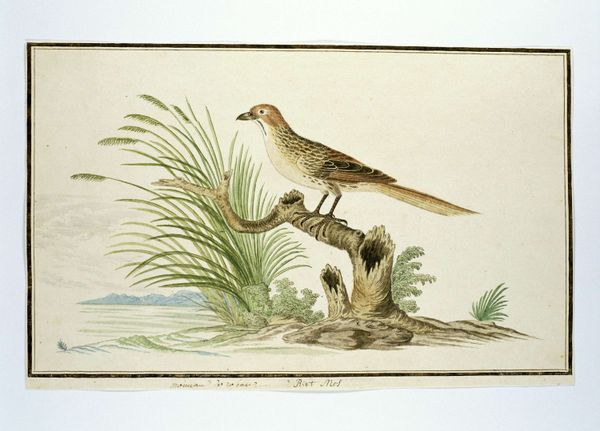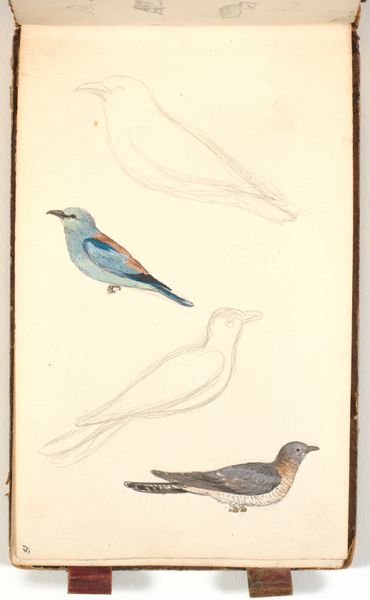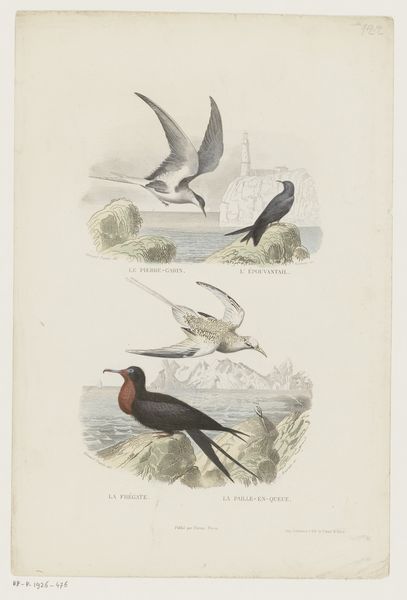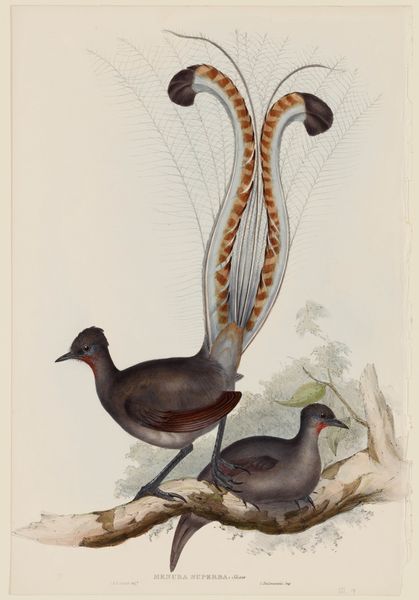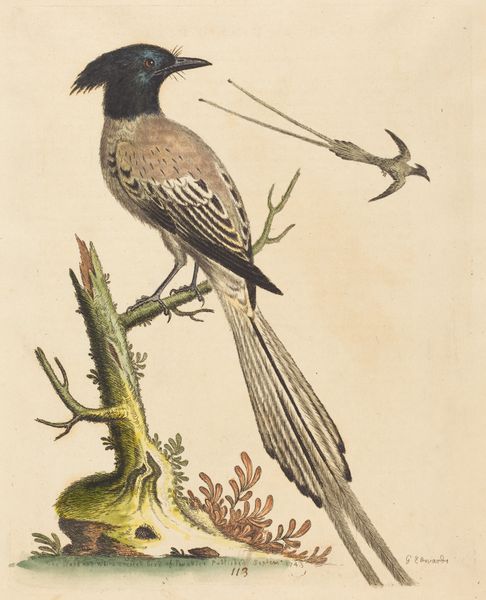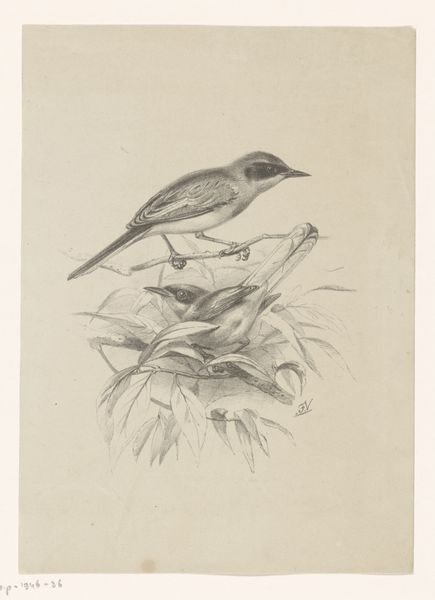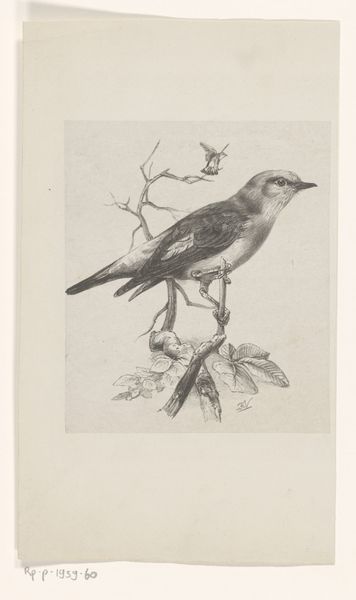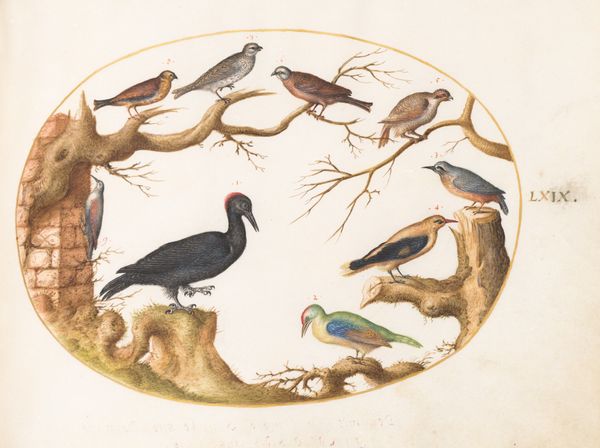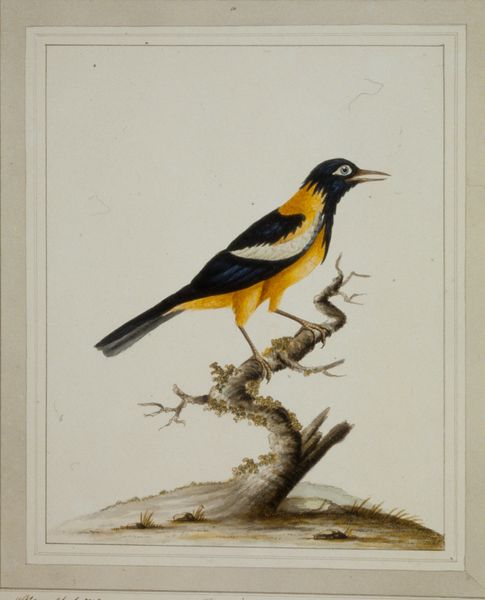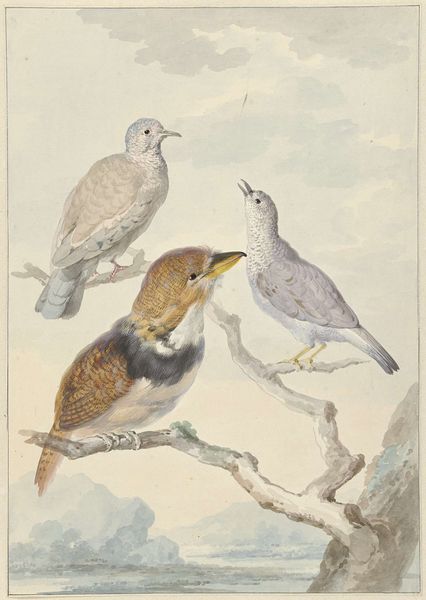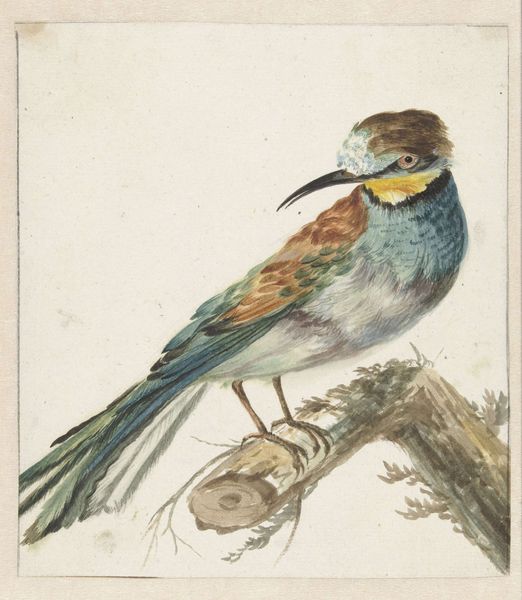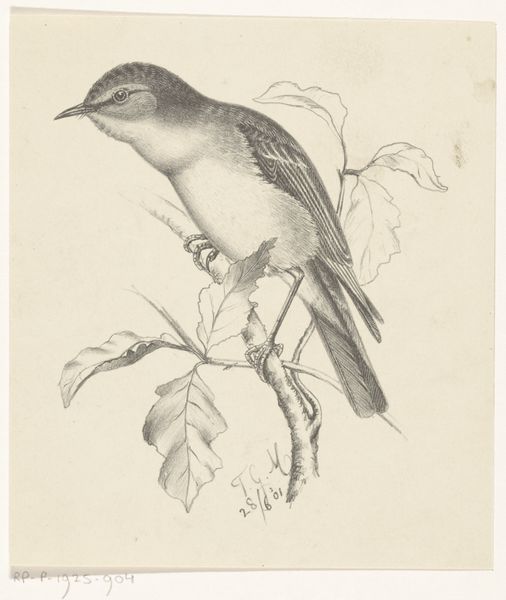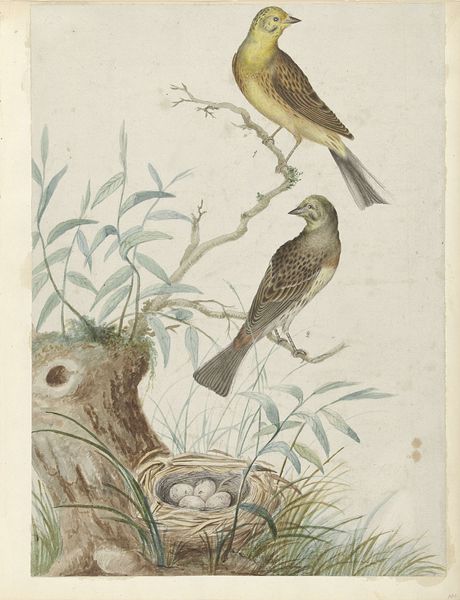
drawing, paper, watercolor
#
drawing
#
water colours
#
animal
#
landscape
#
paper
#
watercolor
#
coloured pencil
#
realism
Copyright: Public Domain: Artvee
Curator: At first glance, I find this drawing to be remarkably peaceful, even melancholic. There’s a quiet stillness about it. Editor: This is "Black Tern; Great Shearwater" by Archibald Thorburn. It’s rendered with watercolor and colored pencil, primarily on paper, capturing two different bird species within their natural habitat. Thorburn was known for his meticulous detail. Curator: Yes, you immediately notice the scientific precision, almost like an ornithological plate, and he obviously understood these birds intimately. Look at the lower bird, the darker one, perched so resolutely on what seems like a nest. The texture he achieves in its plumage is incredible. Editor: Indeed. And that level of realism speaks volumes about the changing attitudes towards nature in the late 19th and early 20th centuries, a period increasingly aware of environmental issues and species extinction. Artists began cataloging, celebrating the natural world in detail. Curator: Right, a need to preserve. I keep returning to the colors. The subdued palette—browns, greys, hints of green—adds to the work’s contemplative quality. The Black Tern's dark plumage suggests shadows, secrets. Water, particularly, can signify the unconscious and flow in this liminal zone of land and water. Editor: Watercolors, in this case, are an interesting medium to highlight, too. Water, light—those elements blend almost seamlessly here. Thorburn's attention is dedicated to ornithological authenticity, not social critique. His detailed portrayal emphasizes our observational approach to wildlife in society. Curator: Well, I might posit the two can coexist. Observing, capturing these creatures is always an intervention, a type of control. But to be clear, this speaks less about colonial extraction and rather the melancholy of loss; species that we now see with the increasing fear of extinction. The composition directs our eyes vertically, suggesting the water acts like a reflective mirror, an infinite void, that speaks volumes to what lies ahead. Editor: A compelling view. Regardless, for our audiences today, it's crucial to recognize the historical context—this piece speaks to the Victorian-era desire to document and claim natural heritage. Curator: An act frozen in a picture. Fascinating. Editor: Precisely. Thank you.
Comments
No comments
Be the first to comment and join the conversation on the ultimate creative platform.
